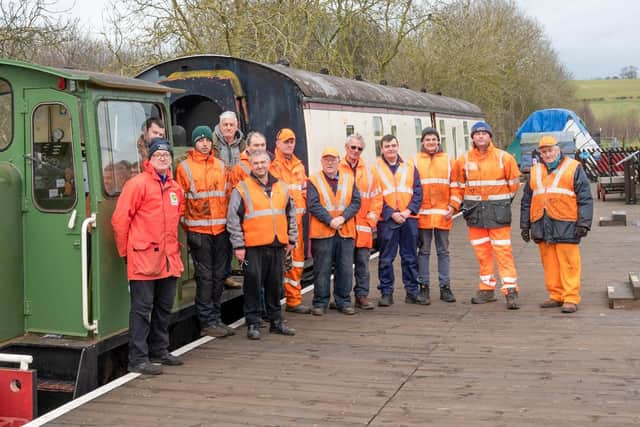Yorkshire Wolds Railway complete the first full train movement on the old Driffield to Malton line since it closed in 1958
But after seven years of hard work and fundraising, the volunteers of the Yorkshire Wolds Railway have succeeded in completing a train movement not seen since the 1950s.
Their diesel locomotive, Sir Tatton Sykes, named after the local baronet of Sledmere House, shunted a Mk3 coach across the short stretch of line remaining on the route, which closed completely in 1958, eight years after passenger services were withdrawn.
Advertisement
Hide AdAdvertisement
Hide AdThe Driffield to Malton line never saw large numbers of passengers and survived mainly on 'boom and bust' quarry traffic until its closure, after which most of the track was lifted.
The Yorkshire Wolds Railway opened Fimber Halt, close to the site of the original Sledmere estate station, in 2015 and now operate 1000ft of demonstration track, with plans to expand another two miles to Wetwang. They own two shunter engines, a carriage and a brake van.
Membership director Matthew Brown said: "It was a very important day for us as it was the first time in over 60 years that actual shunting took place on part of the former Malton and Driffield Junction Railway. As we prepare for re-opening at Easter, work is continuing on the painting of the coach roof. We managed to complete one side working from the platform, but struggled to reach the other due to the height.
"The obvious solution was to move the coach from its former location on one side of the platform to the other. We have had to move the coach slightly before, but never had the siding connected to the mainline at that point so had to use a tractor. Thanks to the fantastic work done by our volunteers, the track is now all connected meaning that we could use our locomotive Sir Tatton Sykes to handle the movement.
Advertisement
Hide AdAdvertisement
Hide Ad

"Both sections of track have now been joined and later in the season we hope to be giving rides right over the newly installed point. This year many of our developments are coming to fruition, including the commencement of being able to give brake van rides later in the year after a four-year restoration project. We re-open to the public on Easter Sunday."
King George VI used the line when he arrived at Sledmere & Fimber Station in 1948 to visit the Sykes family at Sledmere House, and it was popular for transporting schoolchildren, grain, livestock, racehorses and chalk from the quarries at Burdale and Wharram until they ceased production.
There were seven stations on its route - Settrington, North Grimston, Wharram, Burdale, Sledmere and Fimber, Wetwang and Garton-on-the-Wolds. Yet financial issues meant it was built cheaply, avoiding many of the villages it served and crossing high ground which made it unsuitable for larger engines. The coal traffic originally envisaged never materialised as other routes were faster.
Comment Guidelines
National World encourages reader discussion on our stories. User feedback, insights and back-and-forth exchanges add a rich layer of context to reporting. Please review our Community Guidelines before commenting.
